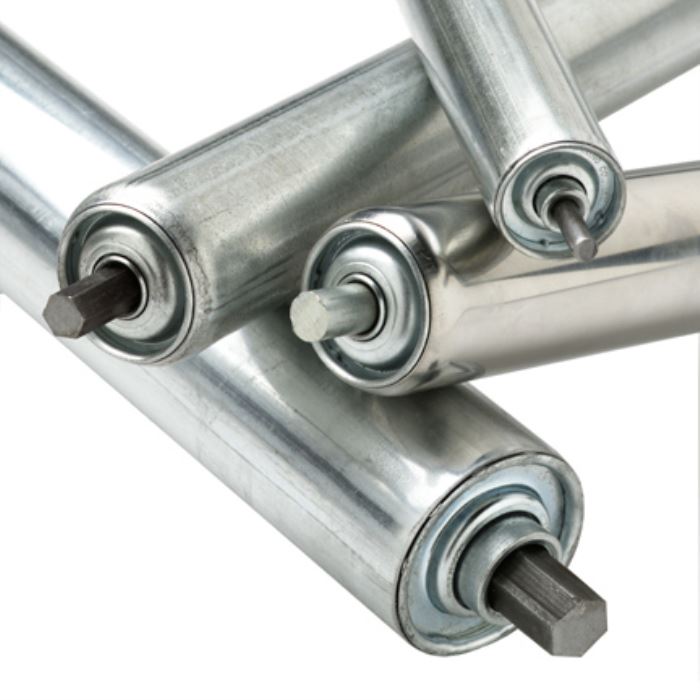Conveyor rollers help make minimal work of relocating items about with very little time and effort, and thanks to the engine driven possibilities, they mean a lot less effort as well. From small wheels, belts and integral rollers there’s a wide selection of rollers available on the current market place, whether you choose a continuous-duty motor or manually powered version.
Rollers are often employed to transport large materials, and there are various different types of rollers for particular applications. Rollers and other conveyors can certainly elevate materials, use vibratory movements to transfer materials, and hang from above. Other popular types include screw conveyors, chute conveyors and tow conveyors.
Lets take a closer look at some of the main types of conveyor.
There’s a lot of grooved roller webpages in great Britain, if you are looking for more information or alternatively values this web page is a good starting point www.conveyorrollers.co.uk
Conveyor Rollers
These are handling products that use rollers mounted in frames to safely move product. The factors you’ll want to think of include the load capacity and height, along with the conveyor length and width. Roller conveyors are often utilised in handling zones that include loading docks, luggage handling or assembly lines. Rollers use gravitational forces or manual power to move goods around and can be straight or bent conditional upon room or working environment.
Powered roller conveyors use driven rollers installed with frames to move merchandise and materials about. The most crucial aspect to consider is the sort of drive that you need. The main drive varieties include belts, chains and motors. Powered roller conveyors have several uses, including food handling, packaging and many other assembly line companies.
Wheel conveyors use unpowered wheels to transfer goods, either by gravity or manual power. If searching for the right wheel system, you might want to think about load capacity, the physical length and width and the electric needs. Wheel conveyors are generally used for loading and unloading vans, and also transferring weighty hefty products that include pallets. Dependant upon the load requirements, wheel numbers and spacing may differ.
Vibrating conveyors use rotary or linear vibration to safely move goods or items along. They are commonly used to move bulk materials like gravel and coal. Depending on the required use, many sizes are available.
Overhead conveyors are installed to ceilings and use trolleys moved by chains, cables or other connections. They are mostly used within companies where the product really needs to be suspended, for example parts handling systems, or for a/c needs. Depending upon the planned use of the overhead solution, the load carrying total capacity can be quite crucial. A good number of devices are powered while you can find the ones that are hand powered.
Belt conveyors use continuous belts to transport objects. These are generally commonly utilised in food suppliers, for baggage handling, in product packaging and in the postal service, though you would usually associate them with the money registers in stores. Belt conveyors are often motorised and function at several rates of speed. Belts can be worked flat as well as at slope inclines.
Beltless magnetic conveyors employ moving magnets below stationery plates to transfer magnetic or ferrous content. Sometimes it is in the form of scrap material or equipment parts. Beltless magnetic conveyors can be horizontal, upright or a mix of both of these.
The Role Of Conveyor Rollers
Your preference of conveyor system relies on the merchandise variation, pace, degree of lift and industry focus distinct towards your business. Certain kinds of conveyor, such as belts and vibrating units, can be employed over long distances in business sectors such as mining and raw materials. At the same time, a vibrating belt system might be of little use in food production or consumer electronics market sectors.
Conveyors might be hand powered, which is when products are moved along manually on the rollers or wheels. Others are air powered or engine powered. Normally, however, they are driven by electrical energy motors. This either happens directly or through reduction gears, chains and sprockets.
Materials and things are commonly moved on the top surfaces of conveyors, though overhead conveyors would be the noticeable exception.
Choosing A Roller
If you’re needing to shift commodities very easily and with minimal energy being applied and the highest level of safety, you might want to take a look at your needs and requirements diligently. Your later judgement will be dependent upon the marketplace in which you operate, the option of power supply (or not) as well as the monetary budget that you may have.
Conveyor rollers are perhaps the most simple and adaptive system and also one of the most inexpensive. Roller systems are also convenient-to-use and maintain and can be modified to a assortment of market sectors and uses. Systems can be custom-designed to for your available space and rollers can be selected by materials, weight capacity, speed capacity and more. This is why conveyor rollers are some of the preferred options for UK organisations.
Roller conveyor systems can be custom-designed from modular components. These include straight sections, contours, transitions, merges, dividers plus much more. Designers provide design ability and unit installation assistance, letting you get the very best platform for your requirement. They may also give you on-going routine maintenance assistance and spare parts which keeps your items and your company moving.
If it’s time you developed your organisation and you need to reduces costs of processing, storage, shipping and delivery or more, then a conveyor roller system could possibly be precisely what you’ve been looking for.

